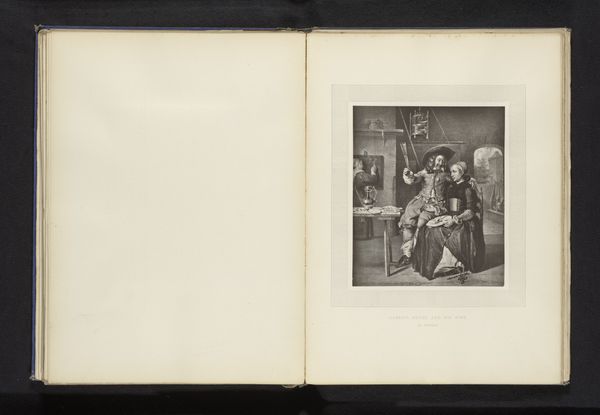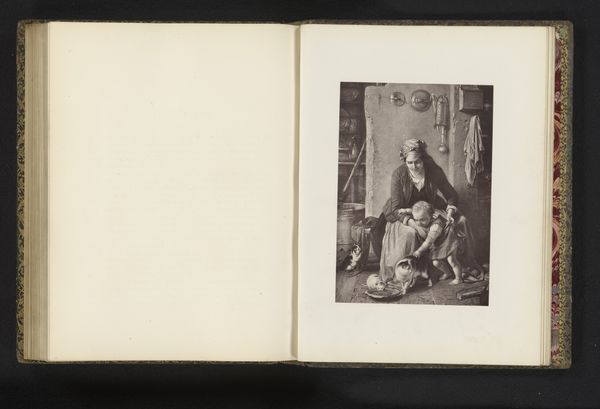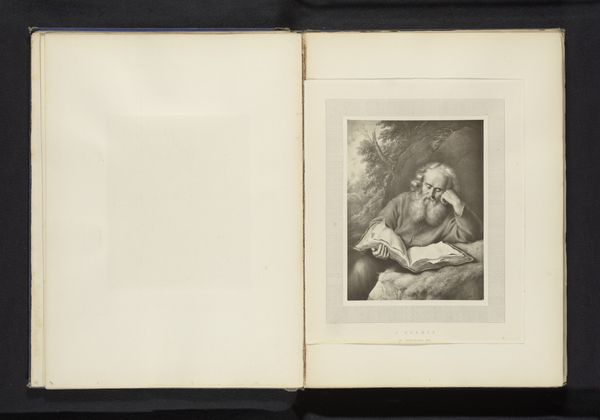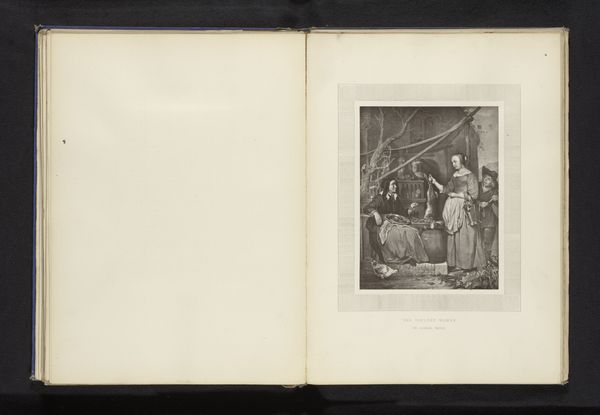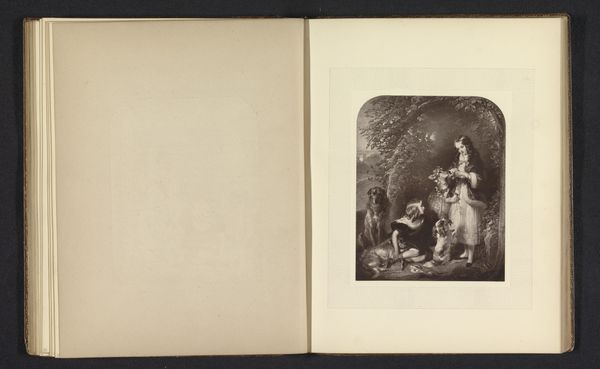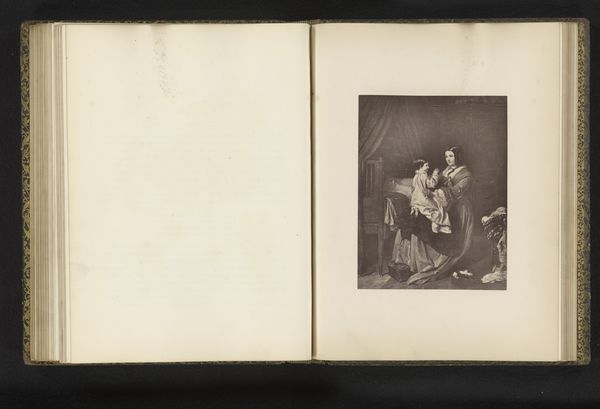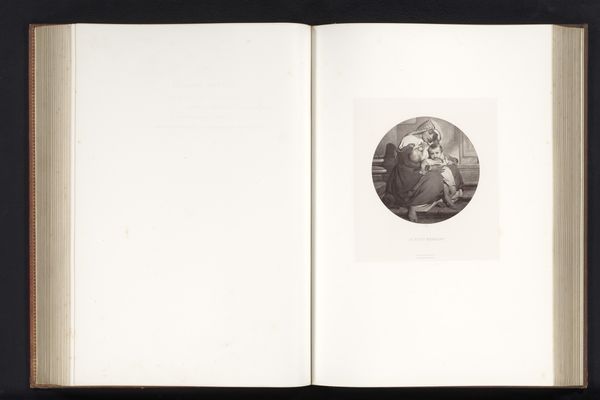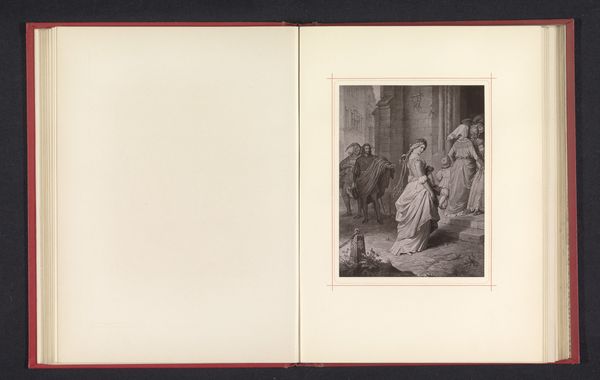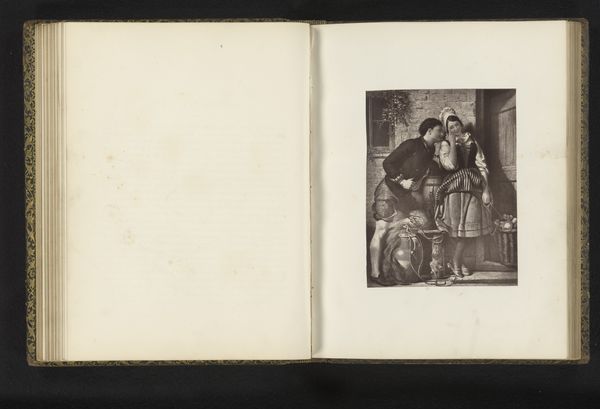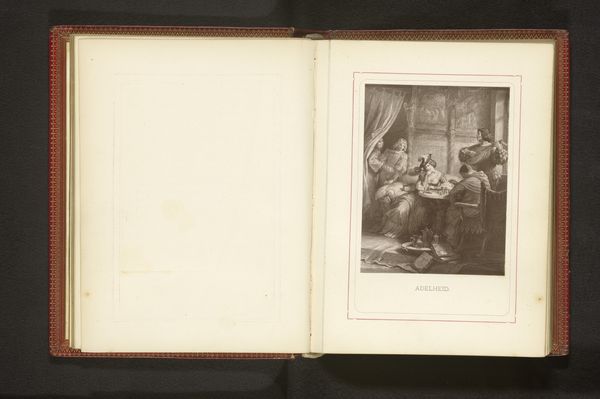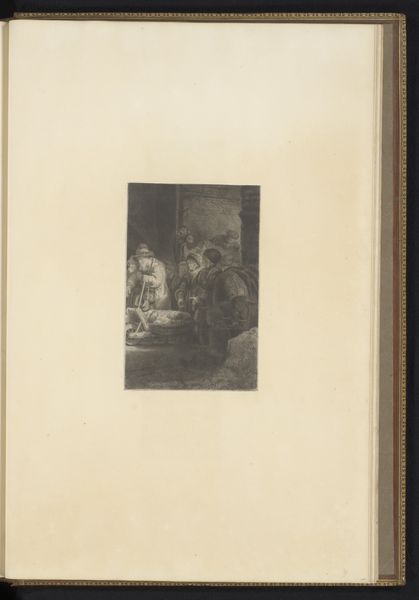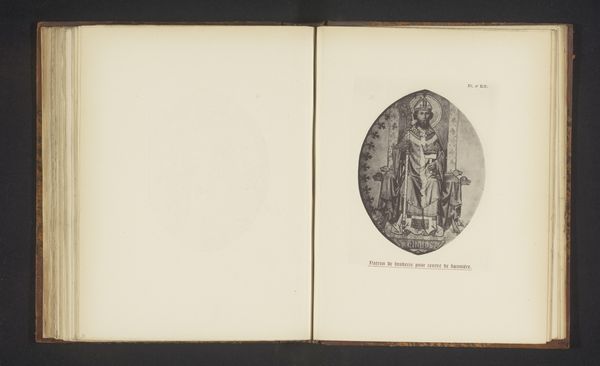
Reproductie van een prent van een vrouw in haar badkamer naar Gaspar Netscher before 1875
0:00
0:00
print, paper, engraving
#
portrait
#
paper non-digital material
#
dutch-golden-age
# print
#
paper
#
genre-painting
#
engraving
Dimensions: height 186 mm, width 148 mm
Copyright: Rijks Museum: Open Domain
Editor: Here we have "Reproductie van een prent van een vrouw in haar badkamer naar Gaspar Netscher," a print made before 1875. It looks like it's an engraving on paper. It depicts a wealthy woman with an attendant in what seems to be a dressing room. There's almost a voyeuristic feel to it, with the arched frame around the image adding to that sense of observing a private moment. What social dynamics do you see at play in this scene? Curator: That's an interesting observation! Seeing this through a historical lens, we can see how art became a vehicle for displaying status and wealth in Dutch Golden Age society. Notice the intricate details in the woman's clothing and the clearly well-appointed room. Do you think images like this reinforced or challenged social hierarchies? Editor: I think it reinforced them. Only the elite could afford to commission such images. It feels like it's about exhibiting their affluence and lifestyle to those lower down the ladder, right? It also feels inherently gendered, showing a woman in a domestic sphere, cementing those societal roles. Curator: Exactly. The act of commissioning and displaying such art solidified existing social norms, creating a visual language of power and gender that circulated widely. Consider the role of institutions like the Rijksmuseum in continuing to display such works today; does the museum play a role in critiquing or upholding this power? Editor: That's a complex question. Displaying it allows us to analyze the historical power dynamics, but without critical framing, it could be interpreted as simply celebrating wealth. It highlights the museum's role as a shaper of historical narratives. Curator: Precisely. Reflecting on the politics of imagery encourages us to be conscious consumers of art, past and present. Editor: I’m realizing how much context influences the interpretation of even a seemingly simple scene. It really challenges my initial assumptions. Curator: And that's the beauty of it. It encourages us to actively question the world we inherit.
Comments
No comments
Be the first to comment and join the conversation on the ultimate creative platform.

